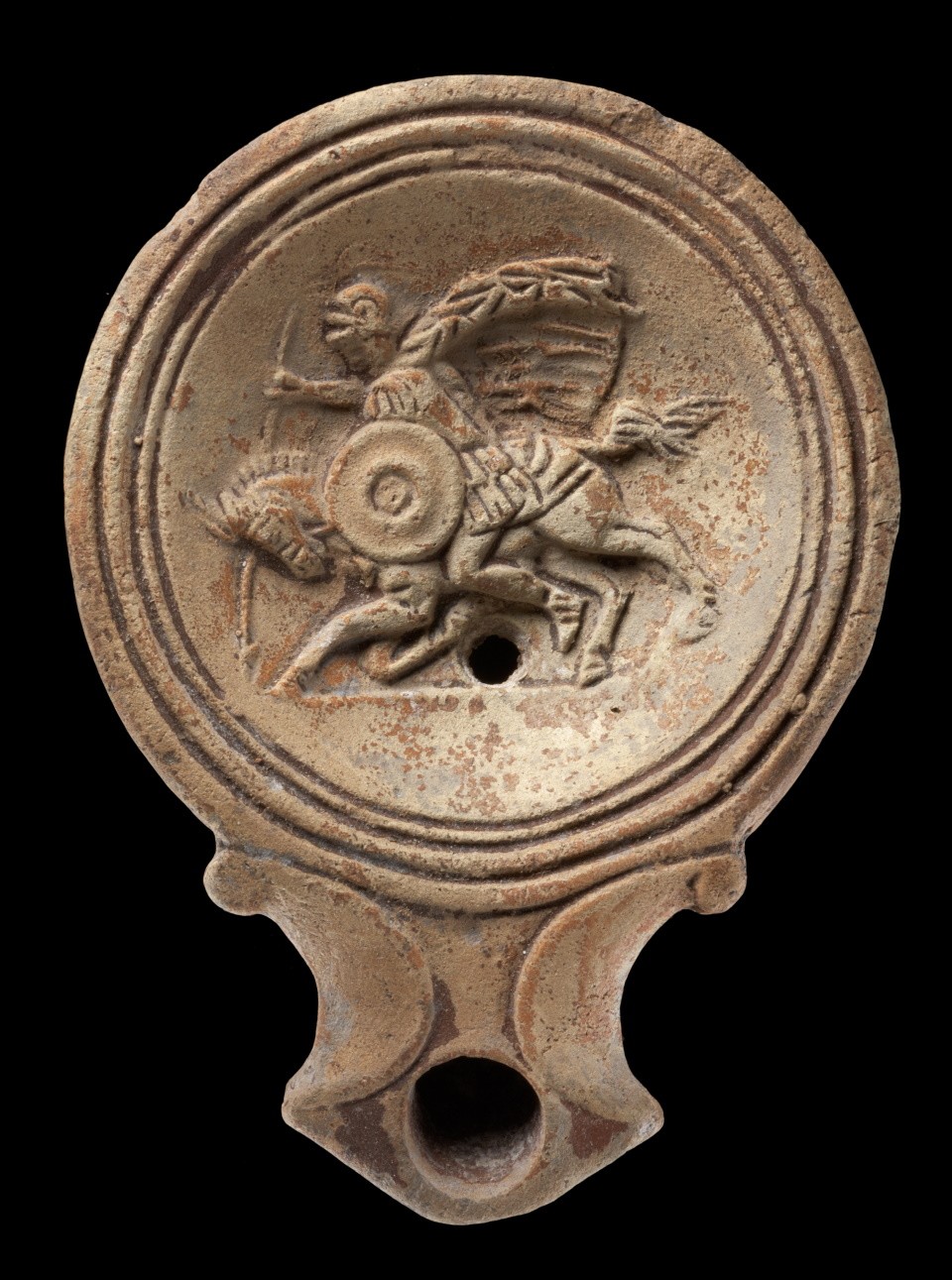Eine römische Volkssage erzählt, dass sich 362 v. Chr. ein großer Erdspalt beim Forum Romanum zwischen dem Kapitol- und Palatinhügel geöffnet habe.
Auguren prophezeiten den Untergangs Roms, wenn die Stadt nicht ihren größten Schatz opfere. Marcus Curtius, ein junger Römer aristokratischer Herkunft, war der Ansicht, dass der größte Schatz eines Volkes seine Jugendlichen seien. Um Rom zu retten, stürzte er sich deshalb zu Pferde in die Tiefe und der Spalt begann sich wieder zu schließen. Diese Stelle auf dem Forum Romanum wird deshalb "lacus Curtius" genannt.
Der Mythos wird seither immer wieder in der Kunst dargestellt. Das Bild auf dem Lampenspiegel folgt dem bekannten Relief des späten 1. Jhs. v. Chr., das L. Naevius Surdinus in Auftrag gegeben hatte (Rom, Kapitolin. Mus.). (AVS)
Ehem. Sammlung Friedrich Wilhelm von Bissing
en









